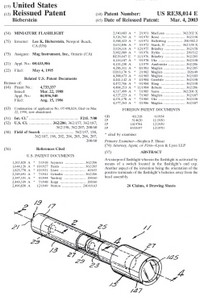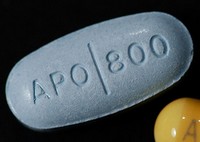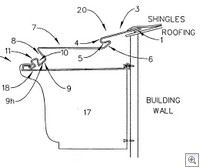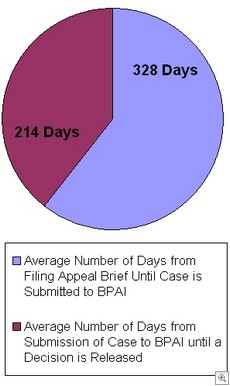In re Comiskey (Fed. Cir. 2007); and
In re Nuijten (Fed. Cir. 2007)
- Comiskey’s patent application claims a method of arbitrating that does not necessarily require the use of any ‘technology.’
- Nuijten’s patent application claims a signal containing a ‘watermark’ without being tied to a specific type of signal or any technology.
Both applications have been denied by the Federal Circuit under 35 U.S.C. Section 101 for their failure to claim patentable subject matter.
The scope of patentable subject matter is defined by Section 101 as any “new and useful process, machine, manufacture, or composition of matter.” Any patent claim must fall within at least one of these categories. Further limiting these categories is our precedential history that not every new and useful process constitutes patentable subject matter. See, for example, Flook & Benson. In particular, the Supreme Court has noted that a process claim reciting an algorithm must either be (1) tied to a machine or (2) transformative of some composition of matter or device. Flook & Diehr.
Under these precedents, a claim that includes a mental process may be patentable — so long as it is otherwise tied to ‘reality.’
Comiskey: The Comiskey method of claim 1 admittedly does not require a machine, but it does require interaction with a ‘document.’ The reference to a document, however, was not enough to allow the “mental process” claim to be treated as legitimate.
“Thus, like the claims that the Supreme Court found unpatentable in Benson and Flook and the claims found unpatentable in our own cases, Comiskey’s independent claims 1 and 32 seek to patent the use of human intelligence in and of itself. Like the efforts to patent “a novel way of conducting auctions” which Schrader found to be directed to an abstract idea itself rather than a statutory category, Comiskey’s independent claims 1 and 32 describe an allegedly novel way of requiring and conducting arbitration and are unpatentable.”
Some of Comiskey’s claims arguably require a computer to operate through “modules.” That claim construction transforms those claims to be patentable subject matter. This means that software remains patentable subject matter if a computer limitation is a proper part of the claim.
Section 101 is Safe: Comiskey appear to reinstate something akin to the USPTO’s ‘technological arts’ requirement that had been eliminated by the Lundgren decision. For Comiskey, recitation of a microprocessor as a limitation of the claims was sufficient to overcome the patentable subject matter issue. Notably, this is a rule of formality that, in most instances, can be followed without substantively reducing claim scope. Under Comiskey, there is no requirement that the technical link be something novel or non-obvious.
Section 103 is Lost: Although the question of patentable subject matter does not require a determination of nonobviousness, the reverse is not true. Nonobviousness may now require an input from the patentable subject matter stage. The most interesting lines of Comiskey are as follows:
“The routine addition of modern electronics to an otherwise unpatentable invention typically creates a prima facie case of obviousness. Moreover, there is no pertinent evidence of secondary considerations because the only evidence offered is of long-felt need for the unpatentable mental process itself, not long-felt need for the combination of the mental process and a modern communication device or computer.”
The implicit holdings here: (1) evidence of secondary considerations do not apply to portions of an invention that are not considered “patentable subject matter;” and (2) during nonobviousness analysis, any portion of an invention that constitutes nonstatutory subject matter will be considered de facto obvious.
Nuijten: The Nuijten court bit off a bit more — finding that a signal is not patentable even if tied to a transitory form (such as a radio broadcast or light pulses in a fiber optic cable). The problem – the court could not fit a ‘signal’ into any of the four categories:
-
Process: Process is defined in Section 100 as a “Process, Art, or Method.” The ‘art’ term appears on its face different than a typically process — especially based on the constitutional statement of “useful arts.” However, the CAFC refused to expand the meaning of process to include items that do not require an action. Thus, a signal is not a process.
-
Machine: The Supreme Court has defined a machine as “a concrete thing, consisting of parts, or of certain devices and combination of devices.” Burr (1863). Under this definition, a signal is not a machine.
-
Manufacture: The court limited a manufacture to an “article” produced by man. According to the court, an ‘article’ is not transient and cannot exist in a vacuum — both qualities of a signal. Thus, a signal is not a manufacture.
-
Composition of Matter: A transient electric signal is not a “chemical union, nor a gas, fluid, powder, or solid.” Therefore, a signal is not a composition of matter.
Failing to fit within a predefined category, the only conclusion is that a signal is not a patentable subject matter.
Rules of Practice:
- Gangrene Treatment: In the political world of the courts, this case might be seen as the CAFC’s gangrene treatment — where the Supreme Court is the disease and patent law jurisprudence is the patient. Several toes have already been lost, and the CAFC is cutting off a foot to prevent the disease from spreading any further.
- Morse Code: One important statutory subject matter case is that of O’Reilly v. Morse (1853) – invoving the patenting of Morse code. In that case, the Supreme Court invalidated some claims as overbroad, but found that Morse’s claim to a “system of signals” to be patentable as an ‘art.’ The CAFC, of course, does not overrule Morse, nor does it adequately explain how Morse’s patent would fit within our modern conception of the four categories.

 Peter Detkin is Intel’s former director of patents, licensing, and litigation who coined the term patent troll. More recently, Detkin co-founded Intellectual Ventures. IV’s product is intellectual property and IP licenses. The company buys patents from small companies and individual inventors and also files patents on its own inventions.
Peter Detkin is Intel’s former director of patents, licensing, and litigation who coined the term patent troll. More recently, Detkin co-founded Intellectual Ventures. IV’s product is intellectual property and IP licenses. The company buys patents from small companies and individual inventors and also files patents on its own inventions.  In re Certain Automotive Parts, 2007 WL 2021234 (ITC 2007)
In re Certain Automotive Parts, 2007 WL 2021234 (ITC 2007) Rejection Reversed
Rejection Reversed Adenta GMBH v. OrthoArm and American Orthodontics (
Adenta GMBH v. OrthoArm and American Orthodontics ( In re Gabapentin Patent Litigation (
In re Gabapentin Patent Litigation (
 The conservative British publication,
The conservative British publication, 